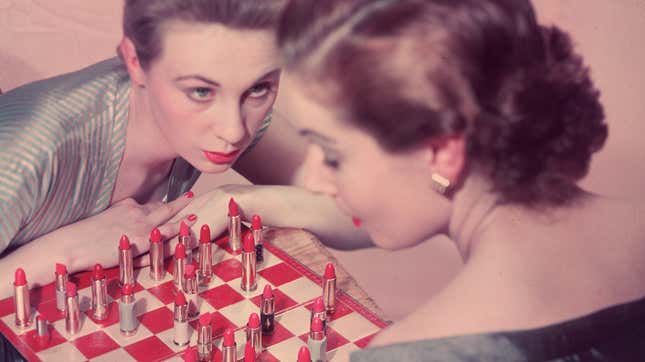If I Wear Thrifted Makeup, Will I Get a Disease?
Latest

Fast-fashion is on its way out; thrifting and peer-to-peer digital resale marketplaces like Depop, Poshmark or Mercari are the future. More and more young people are opting to engage in secondhand shopping because it is a.) fun, b.) affordable, c.) sustainable, d.) cooler and less offensive than going to a Forever 21 for your weekend thot attire. Perhaps unsurprisingly, that behavior has migrated over to the beauty industry. According to the Business of Fashion, there’s a trend in Japan of millennials purchasing secondhand makeup. Their rationale doesn’t differ much from the reasons young people have picked up Goodwill habits: it’s cheaper, avoids waste, if they love the product they can and often do commit to paying full price in the future, and some of the luxury goods are only available in their country via a site like Mercari.
Still, the process strikes me as super unhygienic. In April, a woman sued Sephora for allegedly contracting a herpes-related lip cold sore from a lipstick sample at once of the cosmetic conglomerate’s Hollywood stores. They settled, but if she was able to contract a disease simply from a sample, imagine the dangers of using a pre-loved product, potentially one with an unknowable expiration date?
I contacted a few skin care experts to find out what, if any, dangers could come from this trend.
JEZEBEL: What are the dangers in applying previously used makeup? Do certain used makeups run more risks than others?Dr. Susan Massick, dermatologist with The Ohio State University Wexner Medical Center: Contamination with bacteria and fungi is always of concern with old and used makeup, especially those used around the eyes and mouth. Make up that is open to the air or applied with fingers or brushes are more likely to get contaminated over pump bottles or closed jars.
Jordana Mattioli, celebrity esthetician in New York: Used makeup can contain fungus or bacteria that can cause infections. This is especially an issue for makeup that comes in direct contact with the skin like applicators that touch the skin, or anything that you dip your finger into (like an open jar).
Pencils that can be sharpened, or makeup that is in an airless dispenser would be the better options if you absolutely need to share or buy used makeup.
Dr. Rachel Nazarian of Schweiger Dermatology Group in New York: The skin is a natural host to many types of bacteria, and also may contain yeast, fungal and viral infections. Sharing makeup that was in direct contact with someone else’s skin puts you at risk for exposure to these sources of infection. Those used on mucosal membranes, such as the lips, or around the eyes, (lipstick and lipgloss for example) have a higher likelihood of infection because these areas are vulnerable to invasion by viruses and bacteria.
Products that directly touch skin and are in open containers are certainly also more concerning than those that are in spray containers or pump bottles- because the portion remaining in the container isn’t contaminated each time it’s used. These would be appropriate to purchase as “used” or “resale” with much less risk.
-

-

-

-

-

-

-

-

-

-

-

-

-

-

-

-

-

-

-

-

-

-

-

-

-

-

-

-

-

-

-

-

-

-

-

-

-

-

-

-








































